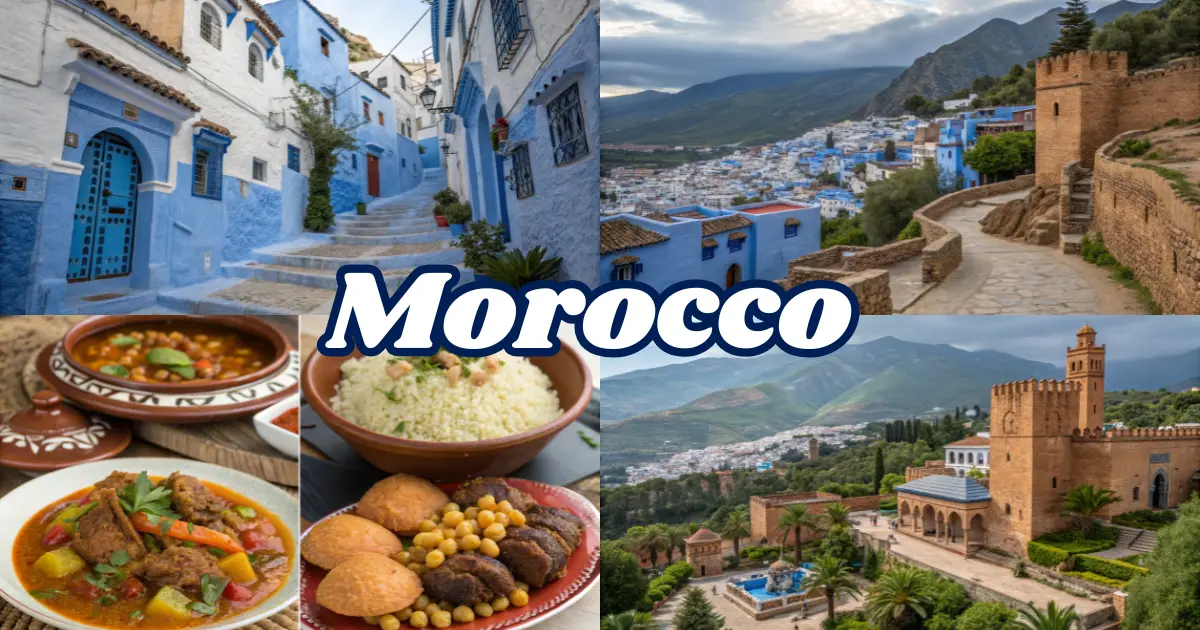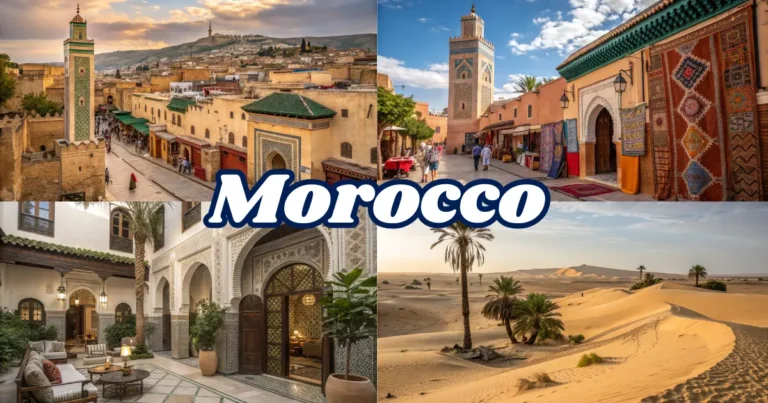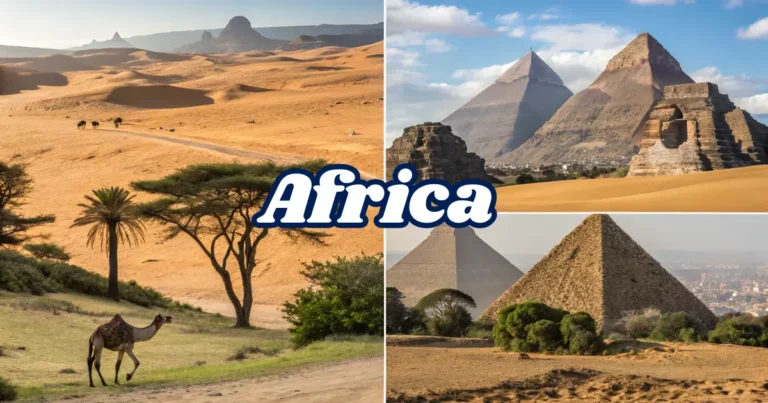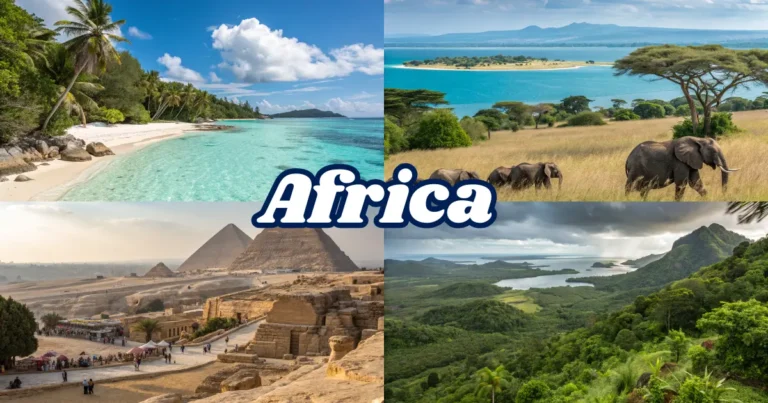History and Culture of the “Blue City Morocco”: Chefchaouen
Table of Contents
Blue City Morocco
Imagine stepping into a world where every street and alley seems to be dipped in shades of blue, creating an atmosphere that feels like something straight out of a dream. Welcome to the Blue City of Morocco, also known as Chefchaouen. This magical city tucked away in the Rif Mountains offers more than just breathtaking scenery—it is a place where history, culture, and art intertwine to create an unforgettable experience for those who venture here.
Whether you’re an avid traveler, a history enthusiast, or simply someone looking to immerse yourself in a vibrant cultural tapestry, Chefchaouen will captivate your heart and soul. In this article, we will explore the history and culture of the Blue City Morocco, its unique architectural charm, and the local traditions that make it a must-visit destination. So, pack your bags and let’s begin this journey through the Blue City of Morocco!
A Glimpse into the History of the Blue City Morocco
Chefchaouen has a fascinating history that goes back several centuries. Founded in 1471 by Moulay Ali Ben Moussa Ben Rached El Alami as a military outpost, the city’s origins are steeped in both mystery and tradition. Situated in the Rif Mountains, Chefchaouen was initially established as a place to control the surrounding region. However, the story of its growth and development goes far beyond just military strategy.
morocco blue city

The Origins of Chefchaouen
Chefchaouen was founded as a military post by the founder to ward off Portuguese invaders. It quickly became an essential center for the Muslim Andalusian population fleeing the Spanish Reconquista. These early settlers brought with them their rich cultural influences, shaping Chefchaouen into the city it is today.
While Chefchaouen originally served a military function, it later evolved into a hub for trade and cultural exchange. The city’s unique location, nestled among the mountain ridges, kept it relatively isolated, which preserved its charm and authenticity. For centuries, this isolation allowed the city to develop at its own pace, preserving ancient traditions that still flourish today.
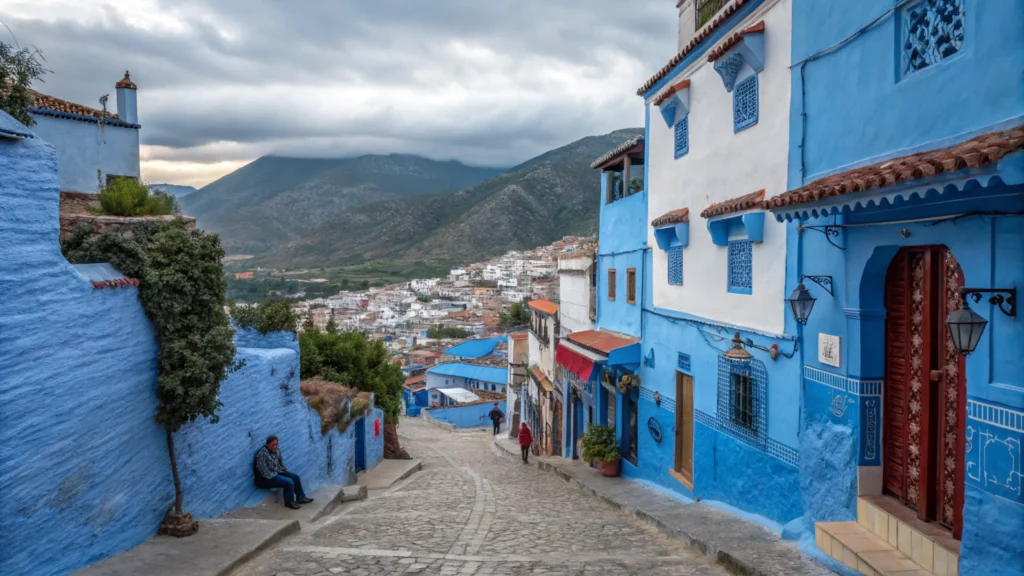
The Influence of the Jewish Community
One of the most fascinating aspects of Chefchaouen’s history is the significant influence of the Jewish community. After the Spanish Inquisition, many Jews found refuge in this small city, where they played an integral role in its development. The blue-painted buildings that the city is famous for are often attributed to the Jewish population, who painted their homes blue to symbolize the sky and their connection to the divine.
This deep spiritual connection is a hallmark of Chefchaouen’s identity. The peacefulness of the city, combined with its visual appeal, draws visitors from all over the world. Whether it’s the tranquil blue streets or the serene atmosphere that fills the air, the Jewish influence is undeniably present in every corner of the city.

Chefchaouen’s Role in Moroccan Independence
Chefchaouen also played an important role in Morocco’s quest for independence. While much of Morocco was under French and Spanish colonial rule, Chefchaouen remained largely untouched. This autonomy gave the city a sense of freedom, and it became a symbol of resistance during the fight for Moroccan independence. It was not until 1956, when Morocco gained its independence, that Chefchaouen officially became part of the nation.
The city’s history of resistance and self-reliance still resonates today, making Chefchaouen not just a beautiful destination but a historical landmark of Moroccan resilience and independence.
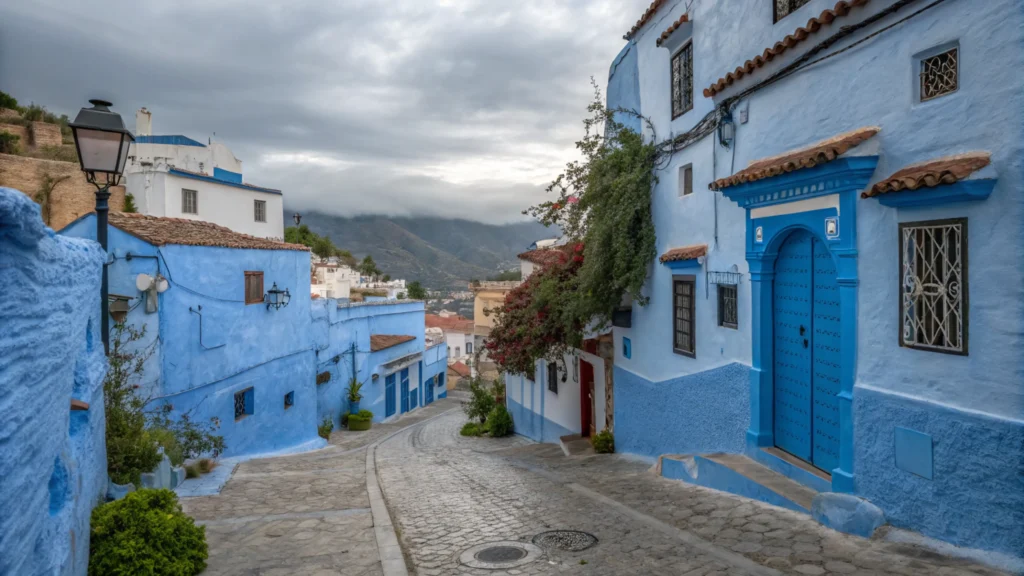
The Cultural Identity of the Blue City in Morocco
Chefchaouen isn’t just known for its stunning views and beautiful blue architecture; it’s also a place where diverse cultures come together to create a truly unique identity. The fusion of Berber, Arab, and Jewish traditions has shaped the culture and lifestyle of the people who call Chefchaouen home.
Blend of Cultures and Traditions
As you stroll through the Blue City Morocco, you’ll notice the harmonious blend of cultural influences. The Berber people, who have lived in the Rif Mountains for centuries, contribute a rich tradition of art, language, and music to the city. The Arab influence, brought by those fleeing the Reconquista, adds to the region’s warmth and hospitality. Meanwhile, the Jewish presence is visible not only in the blue buildings but also in the city’s architecture, food, and customs.
One of the most fascinating things about Chefchaouen is the way these cultures coexist. The city thrives on its diversity, and this is evident in everything from the lively markets to the food you’ll find at local eateries.
Cuisine of the Blue City Morocco
No visit to Chefchaouen would be complete without tasting its delicious food. Moroccan cuisine is rich and varied, and Chefchaouen is no exception. Influenced by both Jewish and Berber culinary traditions, the food in the Blue City offers a delicious blend of flavors.
Some of the must-try dishes include:
- Tagine: A slow-cooked stew of meat, vegetables, and spices.
- Couscous: Steamed semolina served with vegetables and meat.
- Harira: A rich soup made from tomatoes, chickpeas, and lentils.
- Makouda: Crispy, fried potato fritters served as street food.

Table 1: Popular Blue City Morocco Dishes
| Dish | Description |
|---|---|
| Tagine | A slow-cooked stew with meat, vegetables, and spices. |
| Couscous | Steamed semolina served with meat and vegetables. |
| Harira | A flavorful soup made with tomatoes, lentils, and chickpeas. |
| Makouda | Crispy potato fritters, a popular street food in Chefchaouen. |
Handicrafts and Souvenirs
Chefchaouen is also known for its vibrant handicrafts. Local artisans create beautiful textiles, pottery, and leather goods, which you can find in the bustling souks and markets throughout the city. Whether you’re looking for a handmade woolen rug, a delicate ceramic plate, or a soft leather bag, the Blue City has something for every shopper. These handicrafts make for great souvenirs and serve as a reminder of the unique craftsmanship that Chefchaouen is known for.
Architectural Wonders and the Allure of Blue
One of the most iconic features of Chefchaouen is its architecture. The city’s buildings are painted in various shades of blue, creating an atmosphere of tranquility and serenity. This unique color scheme is part of the city’s charm and draws visitors from around the world who seek to photograph its picturesque streets and alleys.
The Iconic Blue Walls
The blue color of the buildings is not just an aesthetic choice but carries deep cultural and spiritual significance. For centuries, the people of Chefchaouen have painted their homes blue to represent the sky and a connection to God. The color blue also helps to keep the buildings cool in the hot Moroccan summers.
Whether you’re walking through the narrow streets or relaxing in one of the many cafes, the blue walls of Chefchaouen create an enchanting ambiance that sets it apart from other cities in Morocco.
Key Architectural Landmarks
Chefchaouen’s architecture is a blend of traditional Moroccan, Andalusian, and Islamic influences. Some of the city’s most iconic landmarks include:
- The Kasbah: A historic fortress and museum located in the heart of the medina. It offers a glimpse into the city’s past and is surrounded by beautiful gardens.
- The Grand Mosque: An example of Moroccan Islamic architecture, located in the central square.
- The Ras El Maa Waterfall: A natural oasis just outside the city, offering stunning views and a peaceful place to relax.
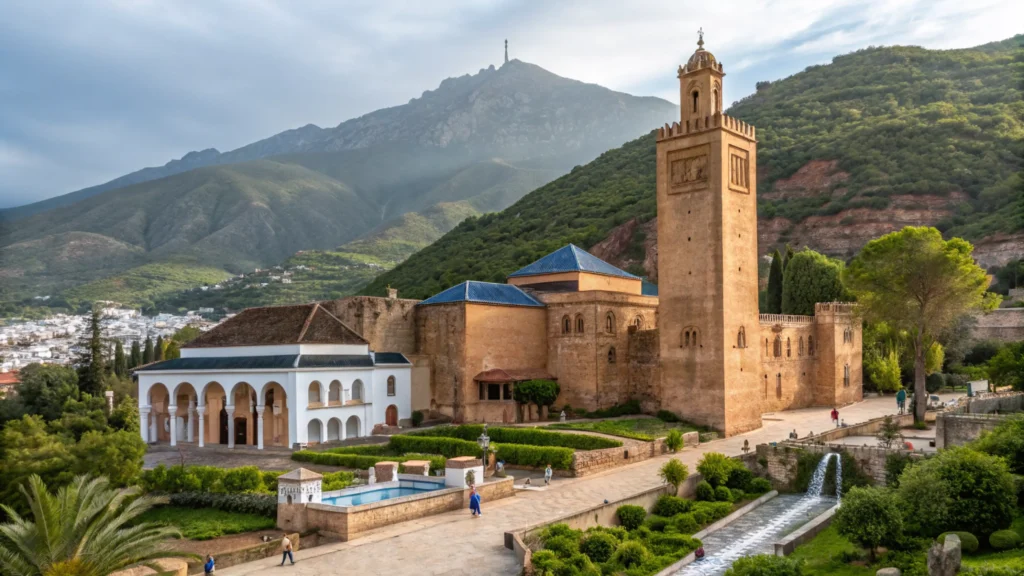
Table 2: Must-See Landmarks in Chefchaouen
| Landmark | Description |
|---|---|
| Kasbah | A historical fortress and museum with lush gardens. |
| Grand Mosque | A beautiful example of Moroccan Islamic architecture. |
| Ras El Maa Waterfall | A peaceful waterfall offering breathtaking views of Chefchaouen. |
Visiting the Blue City in Morocco
If you’re considering visiting Chefchaouen, there are a few things you should know to make your trip even more memorable.
Best Time to Visit Chefchaouen
The best times to visit Chefchaouen are during the spring and autumn months when the weather is mild and comfortable. Summer months can get quite hot, especially in the afternoons, but it’s also when the city hosts various cultural festivals. If you want to experience the Blue City at its most vibrant, plan your trip around the festival season.
Top Activities for Travelers
There is no shortage of things to do in Chefchaouen, from exploring the city’s narrow alleys to hiking in the surrounding Rif Mountains. Here are some top activities to consider:
- Explore the Medina: Wander through the maze of blue-painted streets and discover hidden shops and cafes.
- Hiking in the Rif Mountains: Take a scenic hike to enjoy panoramic views of the city and its surroundings.
- Visit Local Markets: Shop for handmade goods, textiles, and pottery at the vibrant souks.
- Relax at the Ras El Maa Waterfall: Unwind by this beautiful waterfall and enjoy a peaceful moment in nature.
Conclusion: Why the Blue City of Morocco Should Be on Your Travel List
Chefchaouen is more than just a picturesque destination—it’s a city with a rich history, vibrant culture, and welcoming atmosphere. From the iconic blue walls to the fascinating blend of cultural influences, Chefchaouen offers an unforgettable travel experience. Whether you’re exploring its historic landmarks, savoring its delicious cuisine, or simply enjoying the peaceful ambiance, the Blue City Morocco is sure to leave a lasting impression.
So, what are you waiting for? Pack your bags, set off on an adventure, and let the Blue City in Morocco take your breath away!
FAQs About the Blue City Morocco
1. Why is Chefchaouen known as the Blue City Morocco?
The Blue City Morocco gets its name from the distinctive blue-painted buildings, which are a blend of cultural influences, particularly from the Jewish community.
2. What are the best things to do in the Blue City Morocco?
Top activities include exploring the Medina, hiking in the Rif Mountains, visiting the Kasbah, and shopping for local handicrafts in the souks.
3. Is Chefchaouen a good destination for first-time visitors to Morocco?
Absolutely! Chefchaouen is welcoming, beautiful, and relatively easy to navigate, making it a perfect destination for first-time travelers to Morocco.
4. When is the best time to visit Chefchaouen?
The best times to visit Chefchaouen are in the spring or autumn when the weather is pleasant. However, summer offers a lively atmosphere with festivals.

